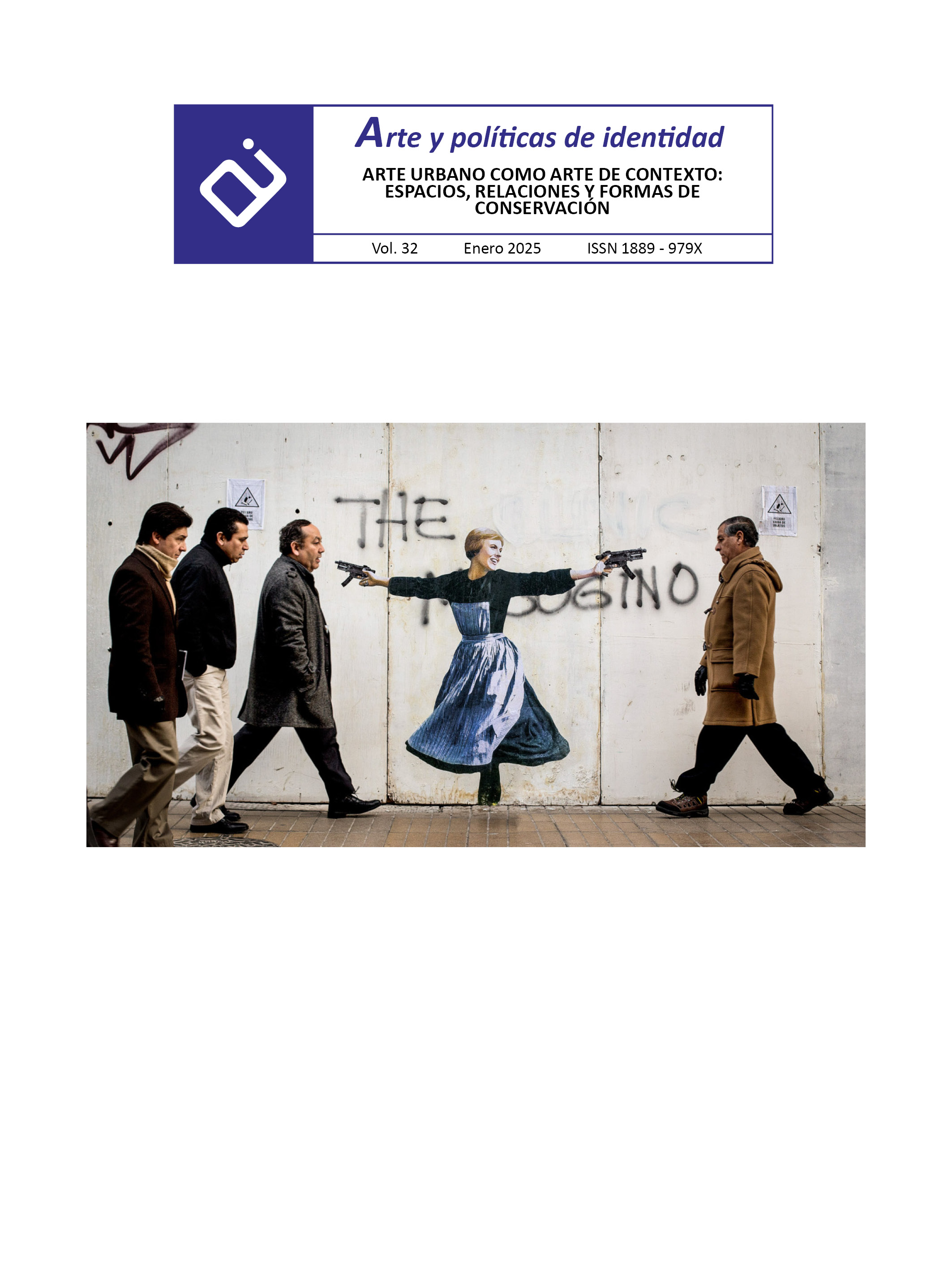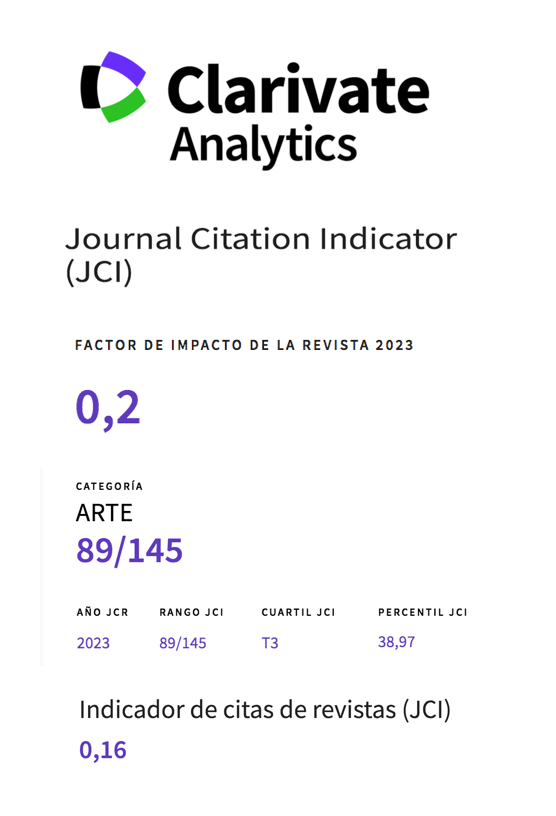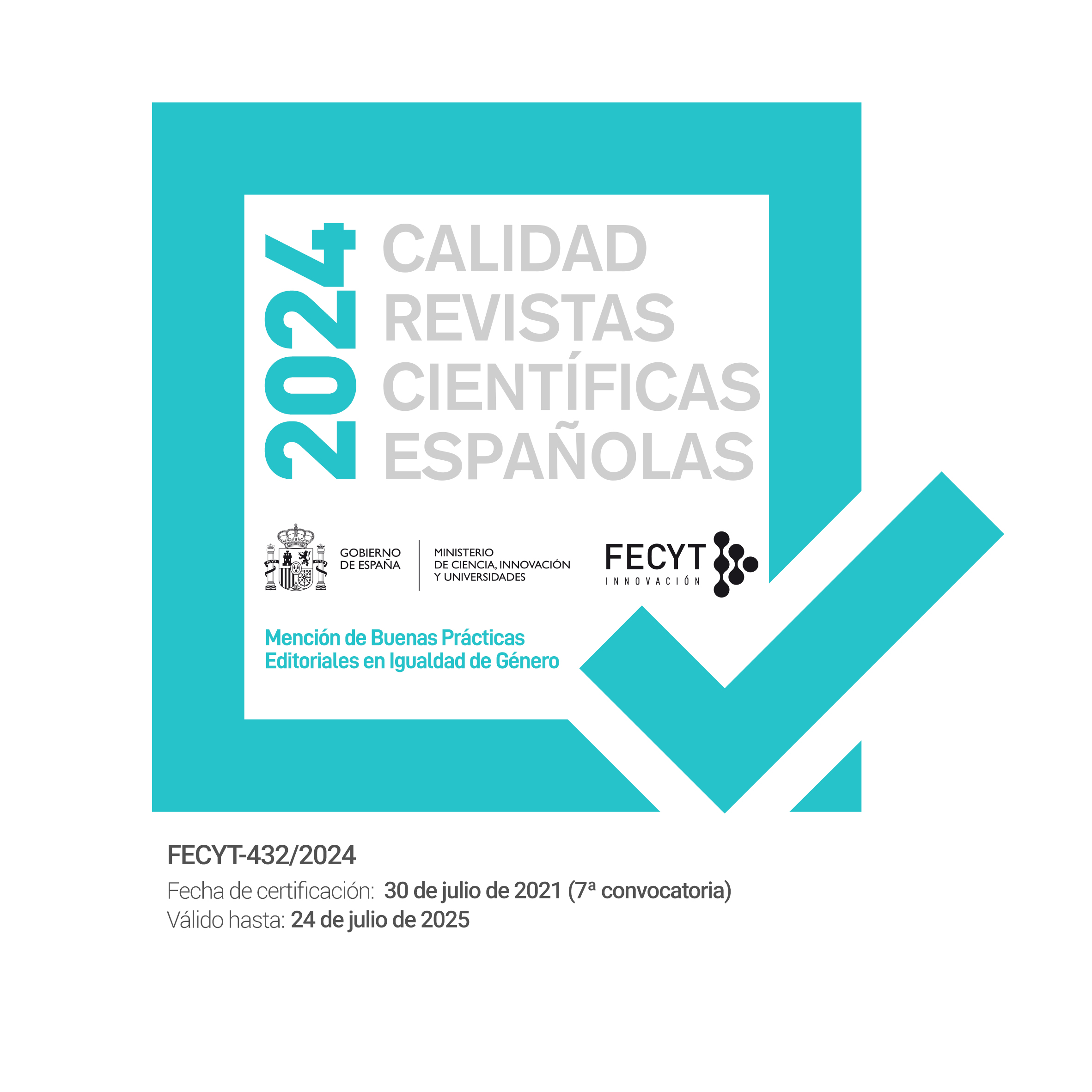Rational beehives and their stowaways
The urban experience in Spanish and South Korean video art
Abstract
This article develops an analysis of various video art pieces created by Spanish and South Korean artists focused on the problems of the contemporary city and the complex relationship with its inhabitants. Video creation is used in this framework as a subversive tool to question and reinterpret the symbols and meanings that establish power hierarchies, exploring the logic that affects bodies. In this way, the sense of strangeness inherent in urban life and the ability of art to demonstrate it is emphasized. By directly capturing the reciprocal interaction between the city and the subjective experiences of individuals, its potential to generate counter-discourses is revealed, proposing narratives that confront and destabilize accepted truths and existing dynamics. The cultural exchange fostered by the selection of pieces aims to show unanimity about these concerns, highlighting that they are common, regardless of the contexts in which they arise.
Downloads
-
Abstract204
-
pdf (Español (España))111
References
Ahmed, S. (2004). La política cultural de las emociones. Trad. Helena López. Ciudad de México: Programa Universitario de Estudios de Género de la UNAM, 2015.
Baudrillard, J. (1978). Cultura y simulacro. Trad. Antoni Vicens y Pedro Rovira. Barcelona: Kairós, 2023.
Benjamin, W. (1939). Tesis sobre la Historia y otros fragmentos. Trad. Bolívar Echevarría. Ciudad de México: Itaca y Universidad Autónoma de la Ciudad de México, 2008.
Camus, A. (1947). La peste. Trad. Rosa Chacel. Barcelona: Edhasa, 2010.
Castells, M. La ciudad y las masas. Sociología de los movimientos sociales urbanos. Trad. Rosendo Gallego. Madrid: Alianza, 1986.
Cucó Giner, J. Antropología urbana. Barcelona: Ariel, 2004.
De Certeau, M. (1979). La invención de lo cotidiano I. Artes de hacer. Trad. Alejandro Pescador. Ciudad de México: Universidad Iberoamericana e Instituto Tecnológico y de Estudios Superiores de Occidente, 1999.
De Diego, E. No soy yo. Autobiografía, performance y los nuevos espectadores. Madrid: Siruela, 2011.
Diamond, J. (2004). Colapso. Por qué unas sociedades perduran y otras desaparecen. Trad. Andrés Felipe Martínez Quiroga. Barcelona: Debate, 2006.
Fisher, M. (2009). Realismo capitalista. ¿No hay alternativa? Trad. Claudio Iglesias. Buenos Aires: Caja Negra, 2016.
Framis, A. Cinema solo, 1996. Disponible en el siguiente enlace:
https://www.aliciaframis.com/work/140/cinema-solo.
Archivo ARES. Estéticas, identidades y prácticas audiovisuales en España:
https://aresvisuals.net/fichas/44_framis_alicia/
Gras Blaguer, M. «El genérico vídeo como máquina de narrar». En Gras Balaguer, Menene (ed.), Narrativas digitales y tecnologías de la imagen (pp. 23-54). Barcelona: Casa Asia, 2012.
Gutiérrez, S. Songlines, 2004-2005. Disponible en Archivo ARES. Estéticas, identidades y prácticas audiovisuales en España:
https://aresvisuals.net/fichas/51_gutierrez_sally/
Ha, T-B. Dance on the City, 2011. Disponible en el siguiente enlace:
Hernández, M-Á. La so(m)bra de lo real. Barcelona: Holobionte Ediciones, 2021.
Husserl, E. (1913): Ideas para una fenomenología pura y una filosofía fenomenológica. Trad. Antonio Zirión Quijano. Ciudad de México: Fondo de Cultura Económica, 2013.
Im, H-S. Factory Complex, 2014. Disponible en el siguiente enlace:
https://imheungsoon.com/factory-complex/
Jameson, F. El posmodernismo o la lógica cultural del capitalismo avanzado. Trad. José Luis Pardo Torío. Madrid: Paidós, 1991.
Kang, Y. 0.4, 2022. Disponible en el siguiente enlace:
https://www.yiyunkang.com/zerofour
Kim, S. A Needle Woman, 1999-2001. Serie de vídeos disponible en el siguiente enlace: http://www.kimsooja.com/works
Lefebvre, H. (1974). La producción del espacio. Trad. Emilio Martínez Gutiérrez. Madrid: Capitán Swing (Col. Entrelíneas), 2013.
Lucas, C. Europleasure International Ltd. Touch and Go, 2010. Disponible en el siguiente enlace: https://cristinalucas.net/touch-and-go
Lynch, K. The Image of the City. Cambridge: MIT Press, 1960.
Massey, D. Un sentido global de lugar. Trad. Abel Albet y Nuria Benach. Barcelona: Icaria (Col. Espacios críticos), 2012.
McDowell, L. (1999). Género, identidad y lugar. Un estudio de las geografías feministas. Trad. Pepa Linares. Madrid: Cátedra (Col. Feminismos), 2000.
Merleau-Ponty, M. (1945). Phenomenology of Perception. Londres: Routledge, 2002.
Miralles, P. Un cuerpo nuevo, 1995; Vago, 1995; Desalojo restos, 1995. Serie de vídeos disponibles en el siguiente enlace:
https://www.pepemiralles.com/archivo/. Archivo ARES. Estéticas, identidades y prácticas audiovisuales en España:
https://aresvisuals.net/fichas/61b2_miralles_pepe/
Park, J. 3 Crossing, 2002. Disponible en el siguiente enlace: http://www.junebumpark.com/?/2002/3crossing/
Pizarnik, A. «Poema 23». En Alejandra Pizarnik. Poesía completa (1955-1972). Barcelona: Lumen (Col. Poesía), 2023.
Rollo, M. (1992). La necesidad del mito. La influencia de los modelos culturales en el mundo contemporáneo. Trad. Luis Botella García del Cid. Barcelona: Paidós, 1998.
Rosler, M. «Video: Shedding the Utopian Moment». En Hall, Doug y Fifer, Sally Jo (eds.), Illuminating Video: An Essential Guide to Video Art (pp. 31-50). Nueva York: Aperture, Bay Area Video Coalition, 1990.
Sassen, S. Contrageografías de la globalización. Género y ciudadanía en los circuitos transfronterizos. Trad. Amanda Pastrana Izquierdo, Claudia Laudano, Amaia Pérez Orozco y Luis Antonio Núñez. Madrid: Traficantes de Sueños, 2003.
Siminiani, L. Conceptos Clave del Mundo Moderno: La oficina (KC#1), 1998; El permiso (KC#2), 2001; Digital (KC#3), 2003; El tránsito (KC#4), 2009. Serie de vídeos disponibles en Archivo ARES. Estéticas, identidades y prácticas audiovisuales en España:
https://aresvisuals.net/fichas/91_siminiani_leon/
Soláns, P. «Del espejo a la pantalla: derivas de la identidad». En Hernández, Domingo (ed.), Arte, cuerpo y tecnología (pp. 137-166). Salamanca: Universidad de Salamanca, 2003.
Speranza, G. Cronografías. Arte y ficciones de un tiempo sin tiempo. Barcelona: Anagrama (Col. Argumentos), 2017.
Steyerl, H. Los condenados de la pantalla. Trad. Marcelo Expósito. Buenos Aires: Caja Negra (Col. Futuros próximos), 2014.
Virilio, P. (1997). El Cibermundo, la política de lo peor (Entrevista con Philippe Petit). Trad. Mónica Poole. Madrid: Cátedra (Col. Teorema), 1999.
Copyright (c) 2025 Servicio de Publicaciones de la Universidad de Murcia

This work is licensed under a Creative Commons Attribution-NonCommercial-NoDerivatives 4.0 International License.
Works published in this journal are subject to the following terms:
- The Service of Publications from the University of Murcia (publishing house) keeps the published works’ copyrights, and favors and allows the reuse of these works under the license indicated in point 2.
- Works are published in the journal’s online edition under the license Creative Commons Reconocimiento-NoComercial-SinObraDerivada 3.0 España(texto legal). They can be copied, used, disseminated, transmitted and publicly exhibited, as long as: i) the author and original source of publication are cited (journal, publishing house and work’s URL); ii) they are not used for commercial purposes; iii) the existence and specifications of this license are mentioned.
3. Conditions for auto-file. It is allowed and encouraged that authors share electronically their pre-print version (the pre-reviewed version) and /or post-print version (the reviewed and accepted version) of their Works before the publication, since it promotes its circulation and dissemination. RoMEO color: green.










